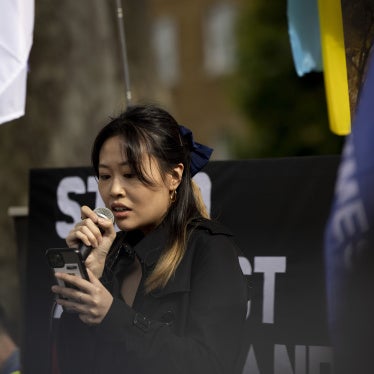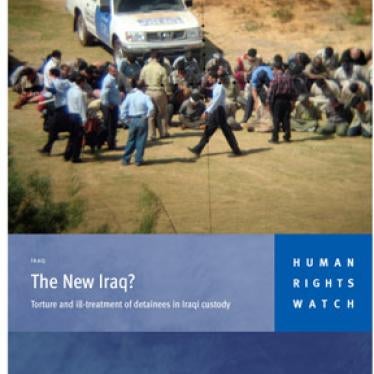As Cambodians, diplomats, foreign governments, the United Nations and others consider how to resolve claims that last month’s elections were biased in favour of the ruling Cambodian People’s Party (CPP), understanding what has happened in prior Cambodian elections is critical.
Cambodia has been stuck in a political impasse as the Cambodia National Rescue party, led by Sam Rainsy, refuses to accept the election results which would see Prime Minister Hun Sen, already the world’s fifth-longest serving leader, remain in power for another five years.
Many diplomats and officials from influential governments know little about recent Cambodian history, leading some to issue meaningless statements calling on all sides to respect the legal process, when the ruling party has total control over the process.
Others have proposed policies that either have no chance at success or, consciously or unconsciously, favour the status quo, such as calling on ‘‘all parties’’ to avoid post-election violence when the CPP has singularly used violence as a tactic in past election periods, or suggesting that the opposition should use its large minority in a new National Assembly to push for electoral and other reform — something the CPP has never allowed over the past 20 years.
According to unofficial results, the CPP took 68 seats in the election, while the Cambodian National Rescue Party (CNRP), led by Sam Rainsy and Kem Sokha, won 55. Some have suggested that the number of seats gained by the opposition is a new phenomenon and would create a new political reality in government and the National Assembly.
Yet, as explained below, the opposition won the election in 1993, narrowly lost in 1998 (and probably would have won a free and fair election) and closely contested the 2003 election (which was also not free and fair). The one constant has been that no election in Cambodia has been free and fair. Throughout, Prime Minister Hun Sen has made it clear that he intends to remain in power indefinitely, no matter the views of Cambodian voters. Will this year be any different?
1993 Elections
Brokered and then signed by the world’s great powers, the 1991 Paris Agreements ensured that elections returned to Cambodia in May 1993 after more than two decades of war and the horrors of the Khmer Rouge regime. From April 1975 to January 1979, the Khmer Rouge ruled the country, then were expelled by the Vietnamese army. However, Vietnam then remained as an occupying power for the next 10 years. The Vietnamese Communist Party installed a client communist party which later became the Cambodian People’s Party to run a one-party state. Basic freedoms were nonexistent and human rights abuses rife.
Vietnam identified a young former Khmer Rouge regimental officer named Hun Sen, making him the world’s youngest foreign minister at age 27 in 1979 and promoting him to prime minister in 1985.
China, the United States, Thailand and other countries made a terrible situation worse by providing direct and indirect support to the Khmer Rouge to fight a proxy war against Vietnam and its backer, the Soviet Union, and by imposing a crippling economic embargo against Cambodia.
The 1993 elections were designed to allow the world’s big powers to extricate themselves from Cambodia. Through the United Nations Transitional Authority in Cambodia (Untac), the UN was given the responsibility to organise elections, which were held in May 1993. Turnout was just under 90%. In a rebuke to the CPP, the opposition royalist Funcinpec party won 58 seats with 45% of the vote, the opposition Buddhist Liberal Democratic Party (BLDP) won 10 seats, and the opposition Molinaka party won 1 seat. The CPP won 51 seats with just 38% of the vote.
The CPP lost despite election violence that killed more than 100 opposition party activists and candidates, a massive campaign of intimidation, and the control of most domestic media, although the UN had its own radio programming. Funcinpec and BLDP wanted to join together in a coalition government, but after Hun Sen and his party threatened secession of the seven eastern provinces and a return to civil war, the UN and key governments capitulated and pressured the opposition to cancel planned mass demonstrations in favour of the election results and instead accept a coalition deal with the CPP, with a view to reforming the system from within.
Funcinpec’s Prince Ranariddh and Hun Sen were named as the world’s first co-prime ministers. But the CPP kept control of the armed forces, police, courts and National Assembly. In the ensuing years, the National Assembly was unable to act without CPP approval, even to change its internal rules, leaving Funcinpec as the winning party only in name.
The CPP then embarked on a successful effort to divide and rule Funcinpec, driving wedges between Prince Ranariddh and Sam Rainsy, then the Funcinpec finance minister, and between Funcinpec and the BLDP, which protested the close relationship between Prince Ranariddh and Hun Sen (something that Hun Sen may try again with opposition leaders Sam Rainsy and Kem Sokha over the next five years).
1998 Elections
In 1997 Hun Sen staged a violent and bloody coup (over the objections of many in his party, including Interior Minister Sar Kheng and the chief of the army, Ke Kim Yan) against Prince Ranariddh and Funcinpec, killing more than 100 and driving many opposition politicians into exile. At the time of the coup, the combined opposition appeared likely to win the 1998 elections. The UN, US, Japan and other governments engineered the return of Prince Ranariddh from exile, but the coup allowed the CPP to grab control of the newly formed National Election Commission (NEC) and increase its domination of the media.
In the run-up to the July 1998 election, the CPP was accused of engaging in political assassinations and intimidation of the opposition on a widespread scale. After the vote, one NEC commissioner, appointed by Funcinpec, demanded to recount ballots from Prey Veng province, where observers claimed massive ballot stuffing, but was threatened at gunpoint in the NEC offices. He went into hiding and no further efforts were made to recount ballots.
On the day after the elections, the CPP-controlled Ministry of Information mistakenly released ‘‘results’’ before any votes had been counted, which were within one seat of the official results declared later in the week by the NEC.
Official results released by the NEC, whose secretary-general was Im Suosdey, the current chairman of the NEC, gave the CPP 64 seats on 41% of the vote. Funcinpec was reduced to 43 seats, while the new Sam Rainsy Party obtained 15, giving the CPP a slim 64-58 majority in parliament.
The opposition cried foul, staging massive, peaceful demonstrations. The protests were so large that the government would have had to use force to prevent them. Later, however, Hun Sen did precisely that, sending security forces into Democracy Park in Phnom Penh to violently disperse protesters.
With street protests quashed, the opposition attempted to use its leverage by refusing to form a coalition government. At the time, the constitution required a two-thirds majority to form a government. This ended when the US told Prince Ranariddh in November 1998 that he would again have to make a deal based on the NEC figures and work for political change within parliament and a new coalition government, this time with Funcinpec as a junior partner. In government Funcinpec had no effective power, as all decisions were taken by Hun Sen and the CPP. The Sam Rainsy Party remained in opposition.
Prince Ranariddh was made president of the National Assembly, and both Funcinpec and the Sam Rainsy Party were given places on parliamentary committees. But neither Prince Ranariddh nor opposition members of parliament (MPs) had any power to overcome CPP objections and move legislation through parliament or to hold the executive branch accountable.
The European Union (EU) provided technical support to the NEC for the 1998 elections. It also sent a large official observer mission, but it was conflicted by its close relationship with the NEC and unprepared to deal with political violence and intimidation. The EU’s observation mission was considered so faulty in Brussels that it was a catalyst for a global overhaul of its observation techniques and standards so that it would never repeat the mistakes it made in Cambodia. 2003 ELECTIONS
There was again another campaign of intimidation and violence, media domination and voter manipulation. The NEC ignored all opposition complaints and certified results that gave the CPP 73 seats (47% of the vote), Funcinpec 26 seats (21%) and the Sam Rainsy Party 24 seats (22%). The opposition refused to vote in a new government, as the twothirds rule still applied, until the CPP agreed to a broad package of fundamental reforms to make Cambodia’s political and electoral system more democratic. It held out for 11 months before Funcinpec gave in and agreed to a 60-40 division of ministerial positions and a much more limited reform agenda.
This proved to be political suicide for Funcinpec, which has since disappeared as a serious political force. All executive power remained in the hands of Hun Sen and the CPP. While Funcinpec and SRP participated in parliamentary committees, they still had no effective power.
The EU officially observed the elections and said it fell short of international standards because of CPP control of the election machinery and media and disenfranchisement of large numbers of voters.
2008 Elections
The CPP held total control of the NEC, state media, state assets and a huge election war chest. Electoral violence decreased, though intimidation of voters continued to be a primary feature of the CPP’s campaign. The NEC announced that the CPP won 90 seats with 58% of the vote, while the SRP won 26 seats with 22% of the vote. Three other parties took seven other seats. The EU again officially observed the election and concluded that it did not meet international standards.
In 2006 the CPP super-majority in the National Assembly had amended the constitution to require only a simple majority vote of members of parliament to form a government, so Hun Sen and the CPP were able to quickly form a government in 2008, this time without opposition participation.
From 2008-2013 even the pretence that opposition parties could play a significant role in parliament was abandoned by the CPP, as it kicked opposition members off committees and limited their ability to raise issues or engage in debates.
In June 2013 the CPP used its majority to remove all opposition MPs from the National Assembly. Combined with control of the government and courts, Hun Sen and the CPP had in effect recreated the one-party state that the 1993 Untac elections were held to bring to an end.
The Paris Agreement successfully ushered in elections every five years in Cambodia, but they did not usher in democracy. Few envisioned that 20 years after Paris, Cambodia would be a de facto one-party state or that one person, Hun Sen, would have centralised almost complete control of all important decisions.
Indeed, after 28 years as prime minister, Hun Sen is now the world’s fifthlongest serving leader, hardly a strong advertisement for pluralism and democracy. The question facing influential countries such as the US, UK, France, and Japan — and indeed Asean countries like Thailand and Indonesia — is whether they will look on indifferently while Cambodians are forced to accept what they would never accept for themselves.







